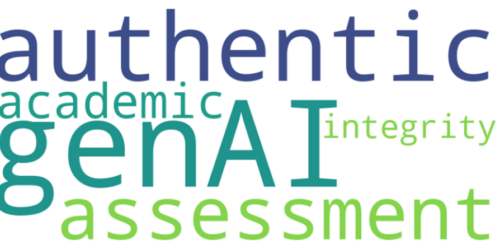
Marking Dilemmas
By Laura Stoutenburg, Kathryn Brillinger, Elan Paulson, and Nasreen Sultana
When we have a lot of marking to do, how should we proceed with grading in order to balance academic rigour and fairness with care and understanding for our students? This teaching tip helps you to manage a number of marking dilemmas you may experience.
Common Marking Dilemmas
- Feeling sorry for a student(s): Students are struggling, and when they approach us, we hear genuinely moving stories of their difficulties. We always want to express concern, share resources, refer to services, and do whatever is feasible to help students. For example, a student may be able to access learning supports before a supplemental exam or make-up assignment to improve their final mark legitimately.
- Worrying about a high fail rate: In cases where there is a high fail rate, it would be better to consult with your Chair prior to submitting the marks than to try to “scale” the marks on your own. We want to be sure that students have demonstrated the course’s learning outcomes without any form of bell curving. A high fail rate should lead to a discussion about the course’s learning outcomes and related assessments. When many students fail, their program design may prohibit opportunities to pick up that credit promptly.
- Feeling responsible for students’ failure: We should always reflect on opportunities for quality improvement in all aspects of our courses, and reflection on our students’ experiences can provide insight. However, we cannot take responsibility for student performance. Students must earn the marks to pass. If you genuinely feel that something in the course was unfair to students, consult your Chair about the possibility of providing a supplemental or make-up assignment.
- Blaming the student: If students are struggling in a course which has traditionally run more smoothly, it is tempting to blame the students for not working hard enough or not being at the right level of preparedness. However, every successful course remains that way by continuous renewal in light of new circumstances. We have formal processes for this in the Annual Program Reflection and Major Program Review, so if you notice that a course is no longer working as it once did, be ready to take forward your suggestions.
- Feeling like a fraud: You may question why some things are not working as you had hoped. Just as you provide support and flexibility for students, now is the time to seek such support for yourself. Talk to a colleague, reach out to Teaching and Learning, and ask the students for feedback (both positive and constructive) with an activity such as a Stop-Start-Continue.
- Confusion about expected achievement standards: It is good to ask yourself what expectations are reasonable for student achievement. To help you think this through and equip you for speaking with students pushing back about a grade, here are the expectations you can refer to.
Expectations Set by the Ministry
The Ontario Ministry of Colleges and Universities sets program standards – including vocational learning outcomes, essential employability skills, and general education outcomes – for all programs they approve and/or fund. Your program outcomes align with those standards, and your course learning outcomes represent steps in the educational journey to meet those outcomes. It is important to remember that a passing grade represents acceptable achievement of the learning outcomes of your course, which in turn should build toward the outcomes of the program.
Questions to reflect on:
Am I evaluating students based on the knowledge, skills, and attitudes listed in the course outline? How are my learning outcomes connected to my course evaluations?
Expectations Set by Conestoga
Grading Procedure
As stated in Conestoga’s Grading Procedure, “Conestoga has a fair and consistent approach to assessing and documenting academic achievement of students. Upon course completion, students earn a grade that reflects their achievement of the course outcomes.” It is critical to review the course and unit outcomes when grading assessments to assure alignment and consistency. The Procedure includes Grading Standards that align alpha grades, grade points, and percentage grades and describe the quality of work expected at each level.
This Procedure provides a useful, concrete tool for ensuring that our marking is fair and standardized and for explaining to students the basis for the grades they receive relevant to their achievement of course learning outcomes. Students can also refer to the standard to contest a grade.
The Procedure clearly states that a failing grade is appropriate when an assessment shows “Insufficient evidence of understanding subject matter and relevant ideas; inability to connect and extend ideas; inability to demonstrate practice.”
Questions to reflect on:
Am I being fair and consistent in each grade I give? Do I have clear evidence to support each grade? Does my rubric support the grades?
Program Advisory Committees
As stated in Conestoga’s Program Advisory Committee Procedure, “Program Advisory Committees (PACs) provide the necessary link between Conestoga and the community it serves. PACs operate in an advisory capacity to Conestoga administration with the objective to keep Conestoga responsive to current and future workforce needs, trends and workplace/industry expectations.” One of the three key elements on which PACs advise academic programs at Conestoga is “Student/graduate success and continuing professional learning.” Program Advisory Committees provide input into the basic expectations for graduates to be ready for entry level positions in their chosen field.
This means that the PACs provide a level of quality assurance for programs and courses. If a course does not include a learning outcome or competency that you believe may be critical to the field, this competency may, in fact, be developed in some other part of the program, as designed through consultation with PACs.
Questions to reflect on:
Am I evaluating within the scope of what is listed in the course outline? Am I evaluating at the level of learning that is required?
Expectations One Feels as a Practitioner in a Field
It is natural for practitioners in a professional field who decide to teach others to bring high expectations of themselves and of their students in terms of their field of practice. In a study of art and design professionals who teach in post-secondary programs, a desire was identified to focus on ‘’reproducing a skilled performance or artefact” (Shreeve, 2009, p. 157).
However, it is important to balance this expectation with an understanding that the very nature of education is developmental. The place of an assignment and a course in the wider picture of the program and the degree to which students are novices in their new field should always be considered. Consequently, it is important to maintain quality standards but at the same time grade students as novices who are still developing their knowledge and skills.
Question to reflect on:
Am I evaluating as if the student is still developing in order to enter my field or industry after graduation?
Expectations One Feels as a Teacher
Shreeve’s study identifies that as practitioners evolve in their identities as teachers, there is also a shift in expectations of their students from product-orientation to a more developmental perspective. As teachers, “tutors could be said to be helping others to construct an identity as a practitioner (Shreeve, 2009, p. 157).” As teachers, we have expectations of our students in terms of their engagement with the learner journey we have set up for them. The practitioner in the teacher measures students against the expectation of a perfect product. The teacher in the practitioner measures students against the teacher’s desire to see students equal the teacher’s care and effort. Unfortunately, no one has informed the students of these mind sets!
Questions to reflect on:
Does my evaluation support the student on a positive learning journey? Am I evaluating the student’s performance, regardless of how I feel about the student’s effort or attitude in class?
Final Thoughts
As faculty, we are responsible for making sure that grades reflect Ministry and College-stated expectations while at the same time maintaining critical care for the needs and situations of our students and compassion for our own journey as practitioners who teach and teachers who practice.
References
Conestoga College. (2020). Grading Procedure.
Conestoga College (2019). Program Advisory Committees Policy.
Government of Ontario. (2021). Published College Program Standards. Ministry of Advanced Education and Skills Development / Ministère de l’Enseignement supérieur et de la Formation professionnelle.
Shreeve, A. (2009). ‘I’d rather be seen as a practitioner, come in to teach my subject’: Identity work in part-time art and design tutors. International Journal of Art & Design Education, 28(2), 151–159. https://doi-org.eztest.ocls.ca/10.1111/j.1476-8070.2009.01602.x






